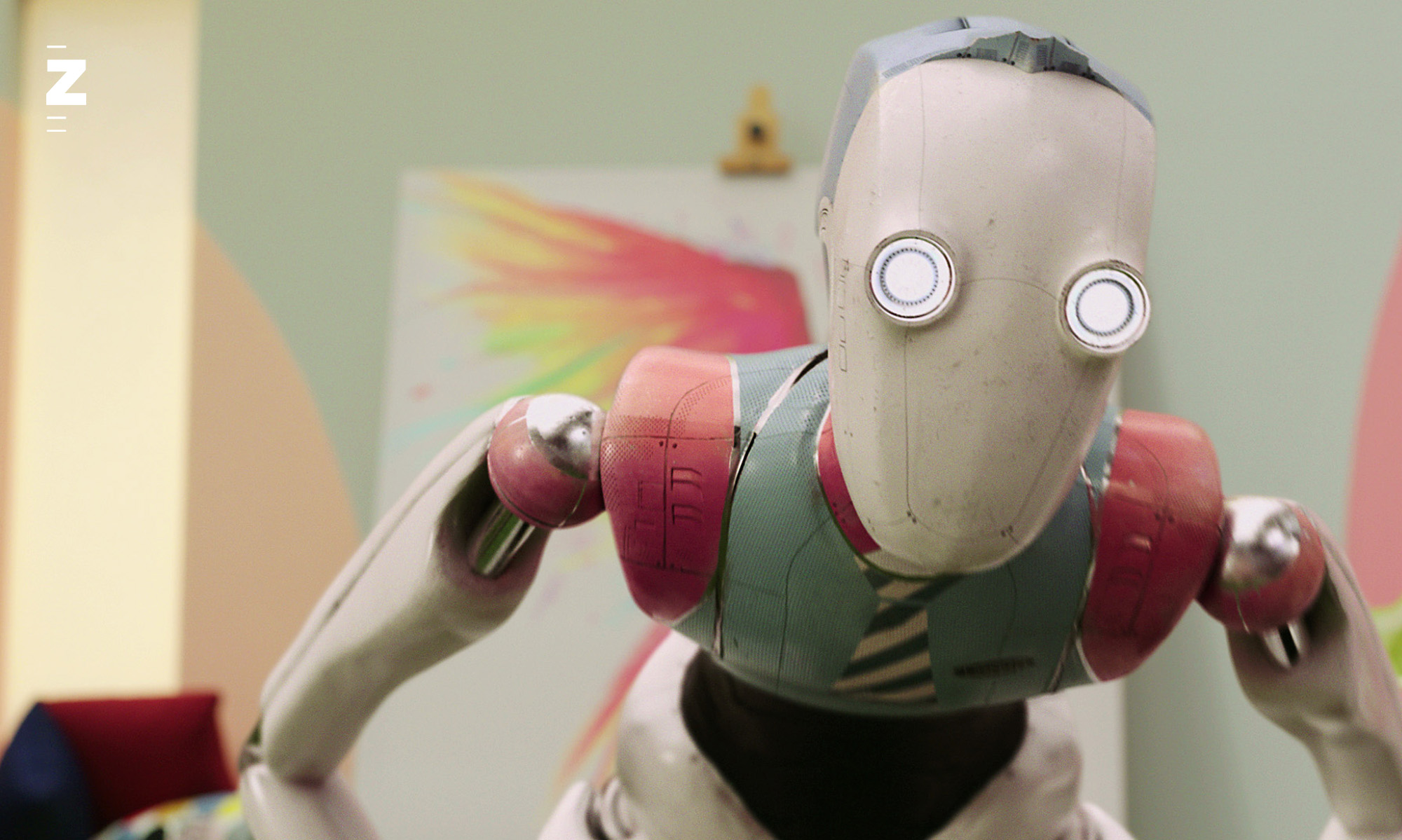The IASpace team conducts practice-based research on the field of interaction between art, design and digital technology. The team members have their professional roots in film, game design, interaction design, music, computer science and engineering, and often members have a background in more than one discipline. The IASpace is part of the research cluster of the Digitalization Initiative of the Zurich Higher Education Institutions (DIZH).
SNSF-Project: Probing XR’s Futures. Design Fiction, Bodily Experience, Critical Inquiry
“Extended reality (XR) devices like Apple’s recently announced Vision Pro or Meta’s Oculus Quest 3 enable new possibilities for mixing the real world with a computationally generated one, promising to “change interaction as we know it.” Yet, there is little research on exactly how XR might reshape bodily subjectivity and experience. Probing XR’s Futures utilizes a critically-historically informed, practice-based design approach to examines how XR technologies reimagine bodily subjectivity, interaction and experience, on the one hand, and how bodily experience could reimagine XR, on the other. The 4-year project employs critical, creative, conceptual and empirical approaches to address three questions: How is everyday interaction in XR achieved? How will XR change interaction and what social reciprocity and mutual access will be enabled? What concrete effects and forms of discipline will be enacted on disabled bodies interacting in XR? The objective is to use design fiction, a design research method that prototypes objects and scenarios to provoke new ways of thinking about the future, as a form of critical inquiry to probe the present and future of social interaction in XR in three different settings and contexts: the lab, public space and in collaboration with disabled researchers and communities. Situated at the Immersive Arts Space at the Zurich University of the Arts, the project is at the interdisciplinary intersection of Critical VR studies, Science and Technology Studies (STS) and experimental media design. It will constitute one of the first in the context of Swiss and German speaking design research to develop alternative thinking and experimental aesthetic-design analysis, reflection and critique of XR directly in situated action and use with the general public.
Team:
Christopher Salter (Project Lead)
Puneet Jain (PhD Candidate)
Eric Larrieux (Researcher)
Chris Elvis Leisi (Researcher)
Oliver Sahli (Researcher)
Philippe Sormani (Senior Researcher)
Stella Speziali (Researcher)
Project Partners:
Andreas Uebelbacher (Access for All Foundation)
John David Howes (Concordia University Montreal, Sociology/Anthropology)
Sabine Himmelsbach (Haus der elektronischen Künste Basel, HeK)
Pilar Orero (Universitat Autònoma de Barcelona, Transmedia Research Group)
Lorenza Mondada (Universität Basel, Institut für Französische Sprach- und Literaturwissenschaft)
Funded by the Swiss National Science Foundation SNSF (01.11.2023 – 31.10.2027)

Past Research Projects
Digital Twins
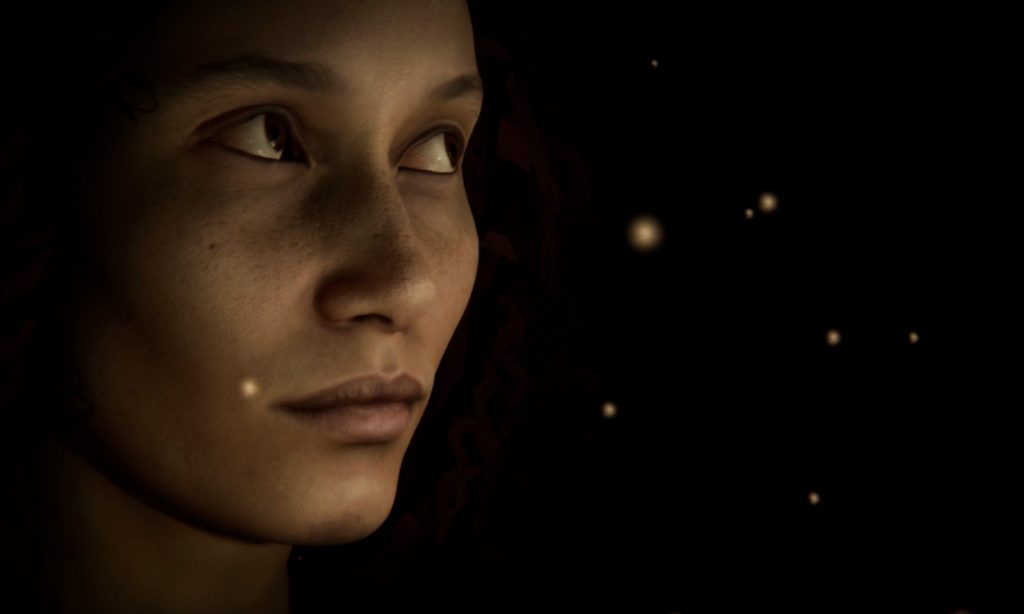
The goal of is to develop a simple production pipeline to create photorealistic digital humans for Virtual and Augmented Reality applications. The project includes a workflow optimization from 3D capturing to body and face rigging and real time animation by means of motion and performance capture. One of the prototypes is the digital twin of Stella Speziali, a research associate of the Digital Human Group.
Crew: Florian Bruggisser (lead), Patxi Aguirre, Tobias Baumann, Stella Speziali
Spatial Augmented Reality
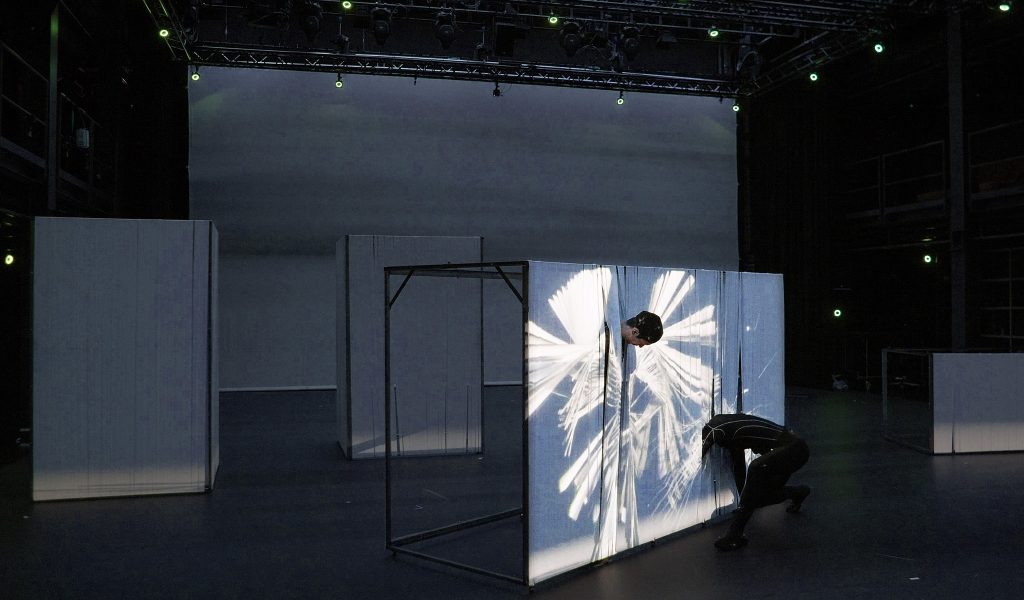
The practice-based exploration of Spatial Augmented Reality – or tracking based projection mapping – is a major research focus at the Immersive Arts Space. Currently, the optimization of latency and the development of high-precision projection mapping on fast moving objects or humans has a high priority.
Group members: Martin Fröhlich (lead) Stella Speziali, Eric Larrieux. Projects: Presence & Absence, Helium Drones. Associated events: Floating in Dancing Lights, Dancing Digital, Twin Lab. Associated educational courses: Illuminated Flying Objects, Immersive Landscapes. Videos: Projection Mapping, Presence & Absence, Helium Drones, Floating in Dancing Lights, A Day at the Beach.
Co-experiencing Virtual Reality
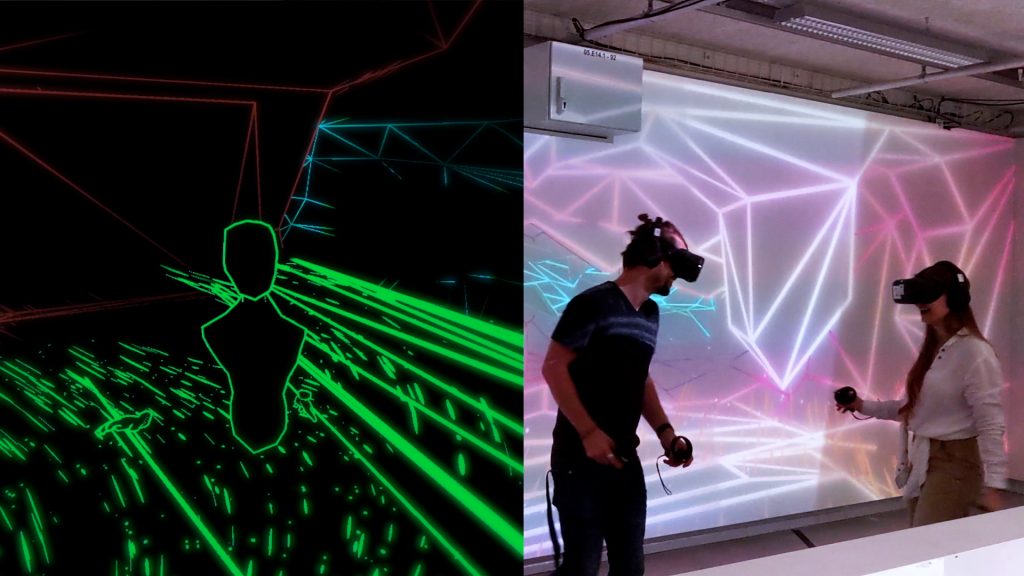
The aim of the project is to develop a versatile co-location multi-user system, with which several users can dive into virtual worlds together in the same room. The system can be
The goal of this field of is to develop versatile and unique co-location multi-user experiences, in which several users can share virtual worlds in the same room. The concept gives room for multiplayers games and interactive experiences in which the users feel closer to their fellow players through increased physical presence experience higher levels of immersion.
Group members: Chris Elvis Leisi, Oliver Sahli. Projects: Home in the Distance VR, Batvision, OEXR (in cooperation with ZHAW), Shifting Realities. Associated event: Virtual Echololocation (@ Refresh #3). Associated educational courses: Mulitiuser VR courses, BA Game Design. Videos: Multi-user VR, Virtual Echolocation
Virtual Production
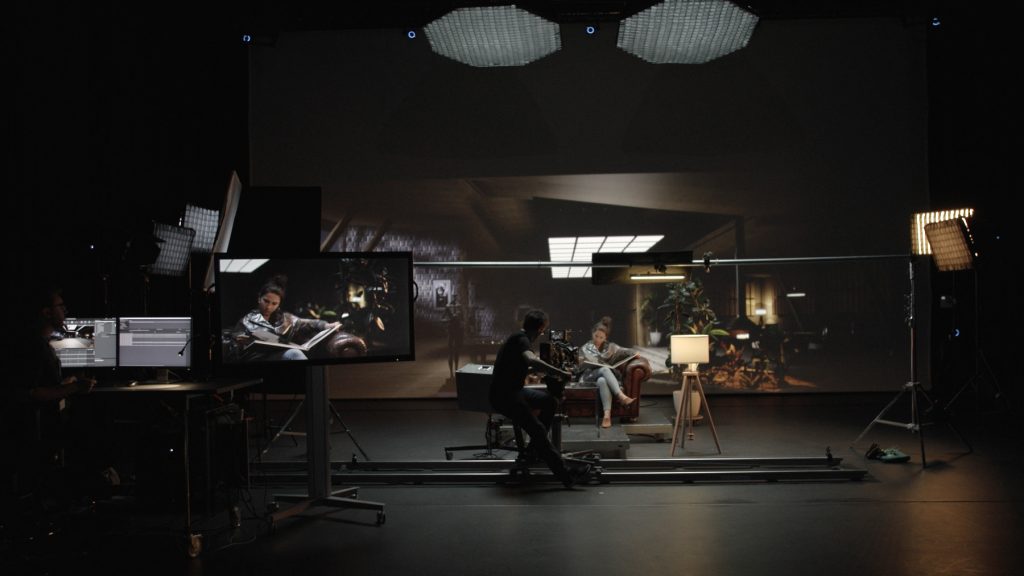
Virtual Production is a central field of competence of the Immersive Arts Space. Its focus is primarily on collaborative simulations in virtual 3D spaces, which find concrete applications especially in film, but also in games, production design and architecture. An important project in this area is the pre-visualization tool cineDesk. In addition, methods for film shoots in virtual spaces, based on the Unreal game engine and projection technology are being advanced. An important achievement this area is the completed project Virtually Real, funded by the Swiss National Science Foundation SNSF.
Group members: Valentin Huber, Norbert Kottmann. Project: cineDesk. Associated educational projects: Previsualization courses, MA Film. Videos: Virtual Production, cineDesk , Scene-Blocking
Capture and Animation
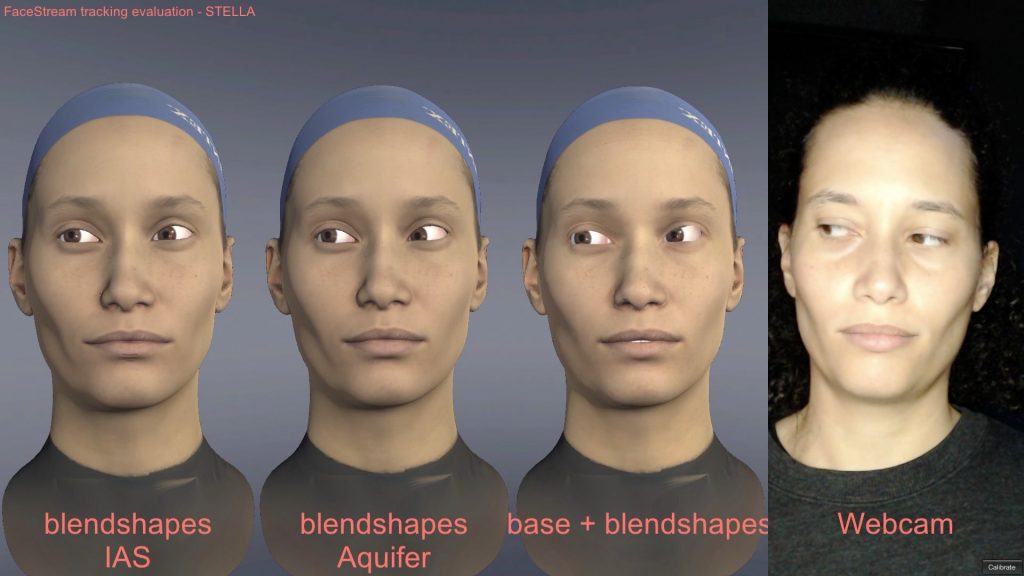
The acquisition of photorealistic 3D models of rooms, objects and human beings is a main focus of this group. Laser scanning, photogrammetry as well as neural volumetric capture processes are used to reach these goals. A central aspect is the optimization of real-time animation by means of motion and performance capture. The implementation of digital avatars has become an important aspect of VR and AR projects in research and teaching.
Group members: Florian Bruggisser (lead), Patxi Exequiel Aguirre and Stella Speziali.
Current projects: Digital Twins, NEVO | Neural Volumetric Capture
.
Spatial Audio
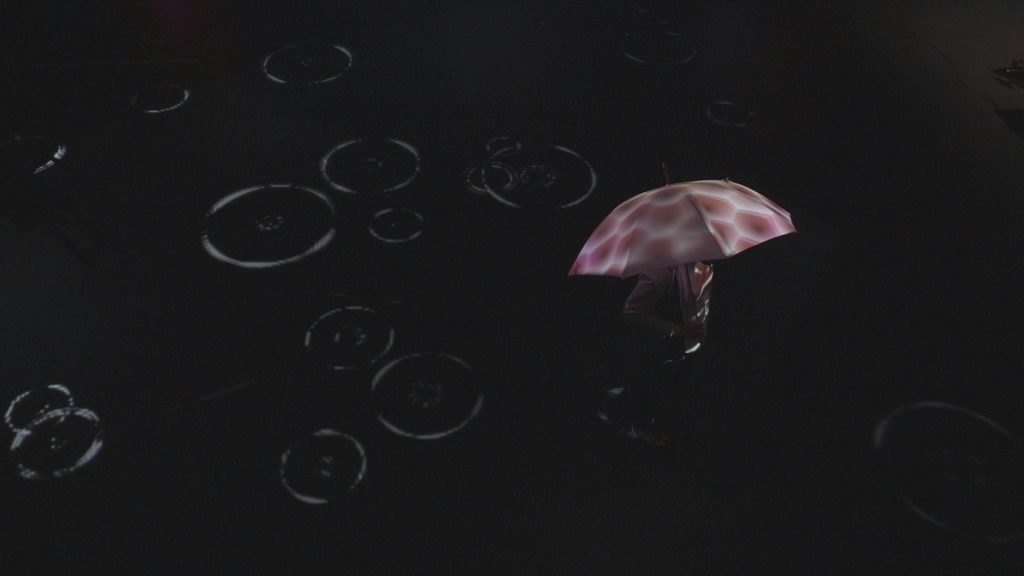
The integration of 3D-Audio in all central activities is an essential feature of the Immersive Arts Space. Spatial audio concepts are currently applied in a highly differentiated way through artistic research components of The Umbrella Project.
Group lead: Eric Larrieux, Associated projects: The Umbrella Project. Associated events: A Day at the Beach. Associated educational courses: Illuminated Flying Objects, Immersive Landscapes. Video: A Day at the Beach.
